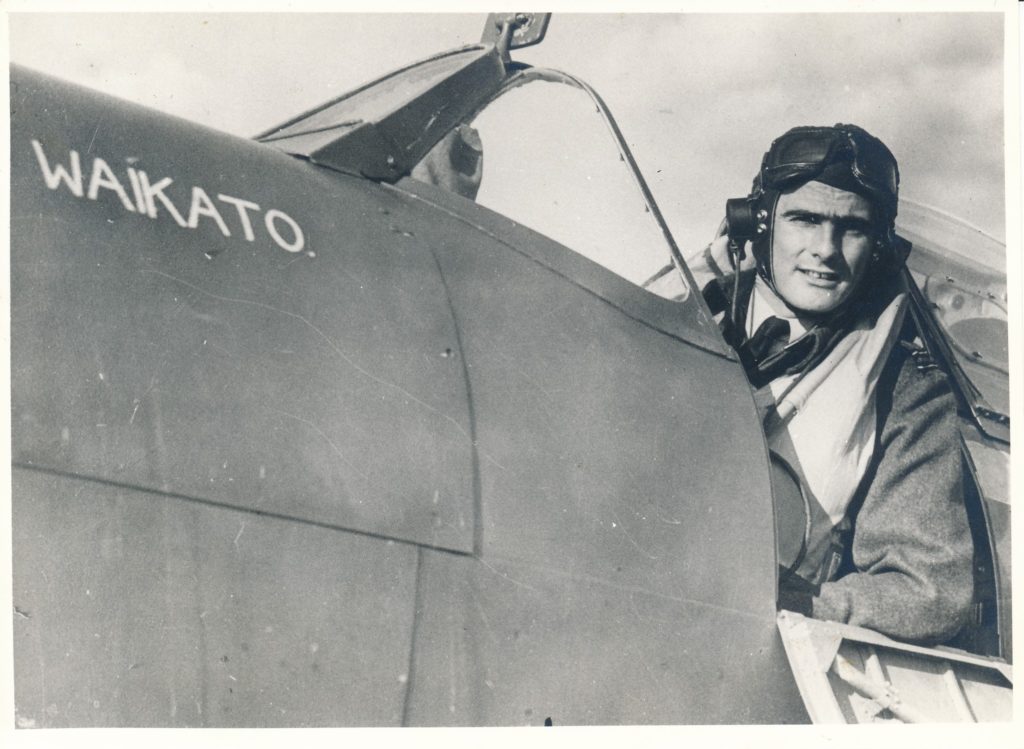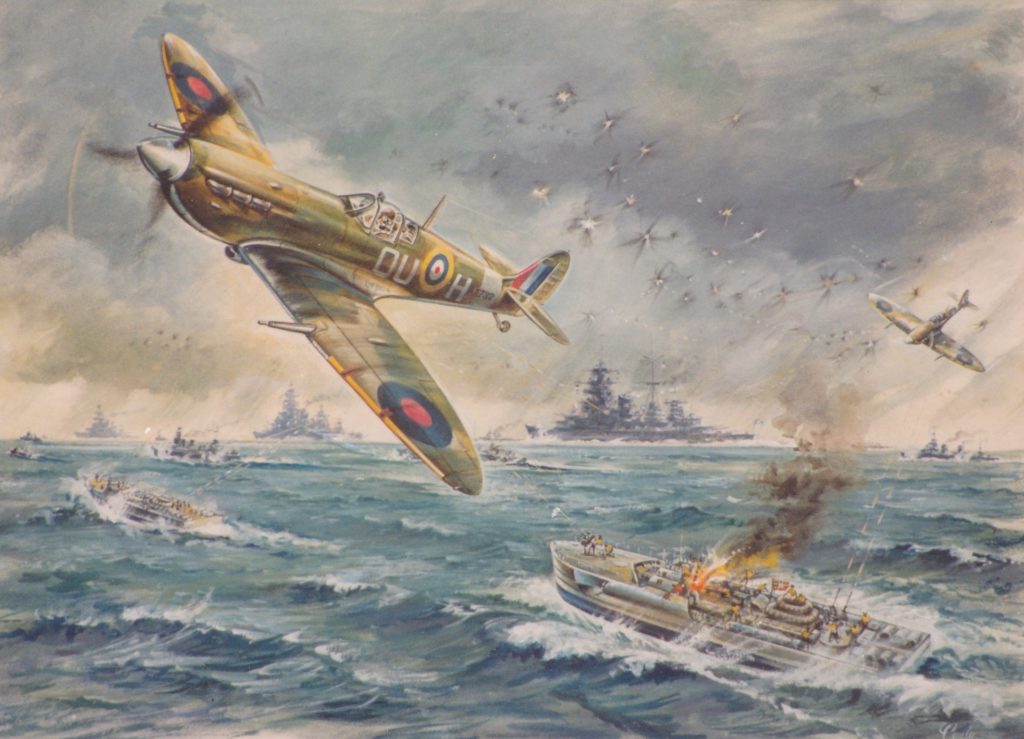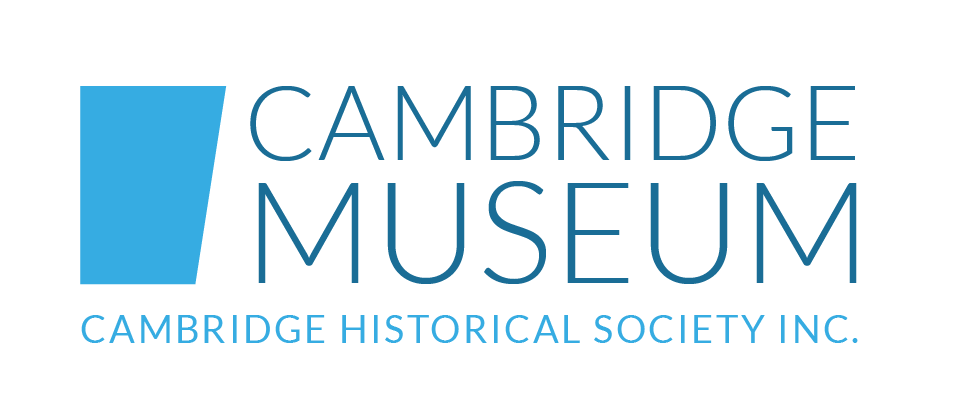
Of Spitfires and Cock Pheasants
-
Flight Lieutenant E. P. ‘Hawkeye’ Wells
In the cockpit of the Subscription Spitfire, ‘Waikato’. Donations from the provinces of New Zealand in 1941 supported the purchase of new Mk V cannon-firing Spitfires for No. 485 NZ Spitfire Squadron. Aircraft were named after the contributing provinces.
(Credit: K.W. Wells Collection)
Late last year (2024) in the Cambridge News, a short Council brief gave notice that a street in the new Kelly Rd subdivision (Cambridge) would be named Edward Wells Street, after ‘a captain in the Airforce’. Close, but the Cambridge son being commemorated in this manner is Group Captain Edward Preston (Bill) Wells, DSO, DFC & Bar. He was better known as ‘Hawkeye’ Wells owing to his excellent eyesight and prowess when shooting game birds, clay pigeons and German aircraft during WWII.
My mother-to-be, Barbara Taylor, liked Bill very much. As well as being neighbours, they were born only two days apart so they were always aware of each other’s birthday. She said he was a favourite with the girls because he was tall, dark and handsome, but she frowned upon him at times as she was sure he was the culprit who sometimes shot her homing pigeons. She said he adopted the name Bill fairly early on as he disliked anyone calling him Billy, Eddy or Teddy. So, Bill he became and Bill he will be in this story.
Not a great deal is known about Bill as a youngster. His good friend, Vic Hall, recalled how sitting with him in the double-seated wooden desks of the Cambridge District High School wasn’t such a good idea as Bill would grab a pigtail of the girl in the seat in front of Vic and dip the end of it into the ink well. Vic would then cop the blame, from the girl, and the teacher. At a CDHS jubilee held some decades later, my Aunt Joan Meredith, a contemporary of Bill’s, wondered aloud if there were any rooms of the school in which Bill hadn’t been caned!
As a young boy Bill began to hunt rabbits and game-birds on ‘Ripley’, the family’s 200-acre dairy farm on the outskirts of Cambridge. He used his father’s shotguns; one of which was a .410-gauge, bolt-action Webley, an ideal gun for a beginner. When of an age to legally hunt game, he joined the Cambridge Rod & Game Club. Over his first season he is recorded as having bagged over 50 birds.
One of these birds was a rather large, regal-looking cock pheasant. Bill took it upon himself to learn how to stuff the creature and mount it on a block of wood. This he did with such competence that Jack Giles, owner of The Sports Depot in town, placed the bird on display in his Cambridge shop window for many weeks. That was in 1933 when the amateur taxidermist was still a teenager. (This same pheasant gains a mention a little later)
The Waikato River, well-stocked with rainbow and brown trout, was easily accessed by a short walk across a few paddocks of Gwynnelands, the neighbouring farm of the Taylor family. Equipped with his father’s split-cane rod, Bill became a competent angler. He was to retain an interest in trout-fishing over the rest of his life.
Membership of the Cambridge Gun Club provided Bill with the opportunity to enjoy trap-shooting (clay birds) the year round. Gun club events were held each month on the Tucker Brothers’ farm at Leamington, but on other weekends he could attend events held in neighbouring towns, like Hamilton, Te Awamutu and Morrinsville. Before long he was not only dominating the sport locally (winning the Boyce Cup in Cambridge, year after year) but in 1938 he achieved national fame when he won the Auckland Provincial Clay Bird Shooting Championship. Around this time Bill took flying lessons and, once war loomed, he found himself at an RNZAF Training School at Weraroa, Levin.
Bill achieved immense status as a fighter pilot in Europe during WWII. His exploits have been well documented in many books so this account will draw on a few personal sources. My mother remembered how Bill’s early successes provided a ray of hope during a sad and dark time when many young Cambridge men were reported as having been killed or were missing in action.
A letter to his parents in Cambridge was written at the height of the Battle of Britain, on 28 August 1940. In it, Bill wrote:
Dear Mum,
I’ll send this airmail, any mail you send, do the same as an ordinary letter often takes more than eight weeks, and that’s too far ahead the way things are moving. I’m at my proper fighter squadron now, all training finished and will be in combat within 48 hours, so it seems prudent to write this letter now. My squadron, whose number I cannot disclose, is just north of London on the East Coast. (It was No. 266 Squadron, based at Wittering)
One month ago, there were 24 pilots in the squadron; when I arrived six were still alive. Three of our New Zealanders in my flight from Weraroa (NZ) are dead so far.
My pay here is with Glyn Mills & Co. Whitehall, I should have some (funds) with B.NSW London. And St John (brother) owes me £100 of which you can collect £50 in the event of my demise. Also, some with G.P.O. Cambridge.
By some coincidence the fellow I’m rooming with said to me the other day “My father’s batman at Aldershot is called Wells and looks something like you, has red hair & comes from Cambridge NZ.” Undoubtedly the great ‘T.G.’ (Bill’s older brother, Thomas Gormanston Wells)
I also met Vic (Hall), he’s gone into the technical side of the R.A.F. as a P/O (Pilot Officer).
I posted a letter (ordinary) shortly after my arrival. Also 2 cables at different times. Tell Dad I wrote to ask him to tell W/Cmdr. Caldwell (‘Grid’ Keith Caldwell, retired WWI airman, living in Cambridge) that I’m on Spitfires and like them very much. I’ve been bombed many times now at different stations, it’s quite exciting, you feel a little helpless though. Many interesting things have been observed but I’m afraid the censor would block them out if detailed.
My thoughts turn constantly to home, and Mr Grimes’ steak (local Cambridge butcher, adjacent to the old Post Office building) which I feel is unequalled throughout the world. Also, our kitchen for a pleasant place to eat it in and yourself to talk to while engaged in such.
Give my regards to Dad & all love to yourself.
Bill
Reading between the lines of this letter one can sense a degree of bravado amidst a great deal of apprehension, a love of family and friends, and an understandable bout of homesickness. Yet there’s also his dry sense of humour ‘the great T.G.’ and a quiet determination with the confidence he expresses about flying Spitfires.
After a shaky start to his participation in the Battle of Britain, when his Spitfire was raked by machine-gun fire, Bill learned the rudiments of aerial warfare rather smartly. By the end of 1940 he had shot down a number of enemy aircraft and had become a competent (but never an over-confident) fighter-pilot.
From another of Bill’s letters, dated 8 December 1940, the far more assured young pilot from Cambridge explained how …
The wily Hun is getting difficult to find in the daytime, so my score, unfortunately, is almost stationary at five down (three confirmed and two probable). It probably means destroyed in both these cases, but I was otherwise engaged with more Me.109s and could not afford the seconds to watch the actual crash.
Quite a lot of our fellows go out in this way, they watch their victim spinning down and forget to watch for other enemy aircraft, and the next thing they know it’s too late. It sounds like elementary common-sense but it is easy to make one mistake.
Most of those fellows who came away with me, and are in that photo at home (Weraroa), are dead or in hospital. As far as I can check up just roughly there is only one other and myself still in action at the moment of writing.
I also have several (enemy) machines very seriously damaged or shared. When the weather improves, I hope to add very considerably to my bag.
As war-time histories reveal, Bill scored many more victories in the air and, by 1942, he had been promoted to lead No. 485 (NZ) Spitfire Squadron. One of the many adventures he had with this squadron is detailed in a painting which captures the event known as ‘The Channel Dash’. On that occasion three German battleships sailed (dashed) from vulnerable harbours in Brest, France, along the English Channel, to safer ports in northern Germany. The NZ Spitfire Squadron acquitted itself well that day in action over the German battleships.

‘The Channel Dash’ (12 February 1942)
The picture shows Bill’s Spitfire, (OU H) attacking a German E-Boat which was left in a sinking condition. The supporting Spitfire was flown by P/O Johnny Checketts.
(Credit: Preliminary sketch by NZ Aviation Artist, the late R. Maurice Conly (1991)
In Cambridge, of course, Bill was a local hero. At the annual branch meeting of the Acclimatisation Society, held on 18 August 1942, a fine stuffed cock pheasant formed the decoration on the chairman’s table. Mr Allan Webster explained how they were very proud of the bird, and much prouder of the member who shot it. “He is, said Mr Webster, Wing Commander E.P. Wells, D.F.C. and Bar, D.S.O.”
Written by nephew Kevin Wells for the April 2025 edition of the Cambridge Historical Society newsletter.
